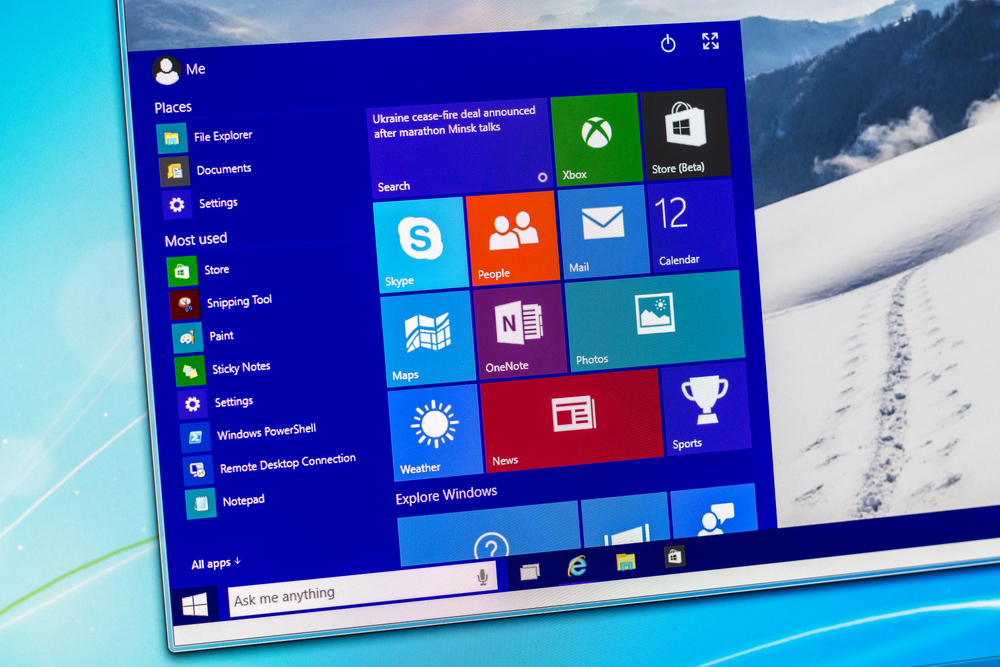The highly publicised launch of Microsoft’s latest operating system, Windows 10, has left businesses around the globe facing the possibility of yet another big migration.
Having so recently moved their organisations over from Windows XP and Server 2003, it’s fair to say that IT departments have likely grown weary in this new environment of constant change.
Thankfully, with the launch of Windows 10, Microsoft has significantly simplified this process. Unlike previous operating systems, Windows 10 has been designed with migration in mind, working on the same Kernel as both Windows 8 and 8.1, as well as much of the same application infrastructure as Windows 7.
>See also: Windows 10 may be free, but it comes at a huge price to your privacy
As a result, the switch to Windows 10 may prove the first mass migration that doesn’t involve years of planning or any last minute scramble to jump over to a new OS.
With the help of Windows’ handy Migration Assistant, businesses are now able to simply lift up their applications, pull out their old operating systems, and slide in the new OS without any significant disruption to their wider business operations.
While this is great news from an IT perspective, it may not be such a good thing from a business point of view. Ironically, due to the simplified nature of this OS migration, Windows 10 could in fact cost businesses more money when considered from a long term application perspective.
Throughout previous migrations, businesses were forced to examine their application estates in order to determine which apps would and wouldn’t function on the new OS. This in turn provided IT managers with the opportunity to identify apps that were considered extraneous or trivial, or were simply never used.
While many business leaders may assume that such unnecessary applications only account for a small proportion of their IT estates, research has shown that as much as 95% of software installed on an organisation’s system is rarely used.
This represents a colossal waste of resources, both in terms of maintenance and storage, as well as licence and compliance costs. In the long term, this can prove to be a significant drain on a business’s bottom line.
Understandably, in the grand scheme of an OS migration such as Windows XP, the opportunity for a business to clean up its estate may seem like little more than inconsequential housekeeping. However, this process can in fact save an organisation hundreds of thousands of pounds in unnecessary maintenance costs and licensing fees.
The result of research carried out earlier in the year showed that maintaining unnecessary applications within a 10,000 user estate can cost businesses as much as $450,000 per annum – a significant chunk out of an organisation’s bottom line.
With the launch of Windows 10, Microsoft has worked hard to ensure that the process of OS migration is as simple as possible, even for those enterprise users with limited IT experience. While this may make the process of application migration easier, it also removes one of the only obvious incentive that businesses have to conduct a review of their existing apps.
For most IT departments, such a consideration will hardly fall high on the agenda. After all, the move to Windows 10 provides the opportunity to adopt a new and significantly improved operating system without having to worry about drawn out upgrades, incompatibilities or many of the concerns that previously surrounded OS upgrades.
And yet, from a financial perspective – which is increasingly important for IT – this missed opportunity is likely to have significant consequences.
As long as IT departments approach this migration with the correct mindset, however, businesses don’t need to lose out as a result of Windows 10. In fact, numerous features of the new OS could actually save businesses money.
Through a successful implementation of Microsoft’s AppV solution, which is bundled with Windows 10, businesses can virtualise applications for real-time use, significantly reducing their licensing spend.
>See also: The new normal – what Windows 10 tells us about youth culture
Likewise, Windows 10’s cross-platform functionality is also a strong incentive for businesses to allow employees to bring their own devices, ultimately reducing spend on company approved and managed hardware.
At the end of the day, moving to Windows 10 doesn’t have to mean a move away from application rationalisation. Instead, all businesses really need to do is change their prevalent mindset towards application management.
Rather than waiting until the next big migration to examine their estates, IT departments should be monitoring and managing their applications on a day-to-day basis. For those that fail to do so, Windows 10 could prove a costly investment.
Sourced from Chris Porter, Camwood










